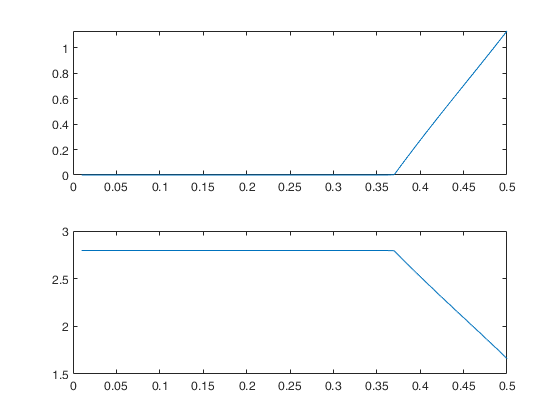RKbdp
RKbdp finds the constants c associated to the supplied breakdown point and asymptotic rejection point
Description
Examples
Input Arguments
Output Arguments
References
Maronna, R.A., Martin D. and Yohai V.J. (2006), "Robust Statistics, Theory and Methods", Wiley, New York.
Rocke D.M. (1996), Robustness properties of S-estimators of multivariate location and shape in high dimension, The Annals of Statistics, Vol. 24, pp. 1327-1345.
 Computation of c and M for a series of values of bdp (v=3).
Computation of c and M for a series of values of bdp (v=3).
